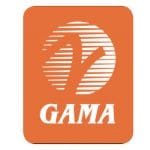HAECO CCO On Dealing With MRO Shop Capacity Constraints
By James Pozzi, Aviation Week
Xiamen and Hong Kong, the demand for base maintenance is particularly strong for widebody aircraft. These facilities are well equipped to handle the maintenance needs of widebody fleets, and we have seen significant demand from customers in this segment. In the Americas, specifically in Lake City, [Florida], and Greensboro, [North Carolina], our focus is primarily on serving narrowbody aircraft. We have observed a high demand for base maintenance services for this aircraft type as well. Across both widebody and narrowbody aircraft, there is a clear indication from our customers that they desire HAECO to expand its capacity to meet their growing maintenance needs. We are dedicated to addressing this demand and exploring opportunities to enhance our capabilities accordingly.
How is base maintenance demand versus shop capacity? How are HAECO schedules looking for this year in the run-up to 2024-25? Demand for base maintenance exceeds the available shop capacity worldwide. This trend is expected to continue over the next 2-3 years. While certain MRO providers have expressed intentions to invest in expanding their capacity, it remains uncertain how these efforts will impact the current pressure on supply. The growth of worldwide fleets and the mix of old versus modern and less maintenance-intense aircraft types play a significant role in determining the balance between MRO demand and capacity in the long term. While the demand for base maintenance at HAECO shops is high, our team is committed to accommodating our customers’ needs. We have secured contracts that span the next 12-18 months, indicating a strong level of demand. However, we strive to work closely with our customers and partners to find solutions and adjust when necessary. Maintenance slot schedules can be flexible, allowing for maneuvering based on evolving requirements and timing. Additionally, our customers in Asia benefit from the proximity of our two large facilities in Hong Kong and Xiamen, which provides added flexibility in shop allocation.
What have you heard from airline customers in relation to slots? Are there frustrations about availability in the market generally? In response to the market capacity situation, airlines have adapted their approach to slot reservations. Rather than relying on short-term arrangements, they have shifted toward a more strategic partnership approach. This involves securing long-term contracts and making early slot reservations, which allow for improved forward planning and operational efficiencies for both the airline and the MRO provider. While frustrations about slot availability in the market may have existed previously, this shift toward long-term contracts has helped alleviate some of those concerns.
What do you believe is heightening a lack of shop capacity in the market? The lack of skilled manpower is a significant factor contributing to the shop capacity shortage in certain regions, such as Hong Kong and the Americas. We recognize this challenge and have implemented new initiatives and explored international collaborations to address the shortage of skilled personnel. These efforts aim to enhance the availability of a qualified workforce and mitigate the impact on shop capacity. On the other hand, the Chinese mainland has experienced a more stable workforce with lower attrition rates, which has helped alleviate the issue of skilled manpower shortage in that region. In addition to the skilled personnel shortage, limitations in airframe OEM production also contribute to the lack of shop capacity. Delays or shortages in OEM production impact fleet modernization efforts, resulting in older aircraft remaining in service for longer durations. Consequently, the need for extended maintenance work increases. Supply chain disruptions and parts shortages further exacerbate the situation, particularly impacting airframe-related services. These challenges have comparatively more impact on services like engine repair, component repair and parts manufacturing.
How is HAECO working to address these issues? Does it look at its operation and areas such as workforce additions, or is it considering other ways to build more capacity? HAECO is taking a multifaceted approach to addressing the challenges posed by high demand and limited capacity. We are actively reviewing our operations to identify areas where we can improve efficiency and optimize processes. This includes initiatives to enhance shop efficiencies and streamline workflows. Additionally, we are leveraging digital solutions to provide greater transparency to our customers. Our “Customer Gateway” platform offers real-time visibility into the progress of each aircraft undergoing maintenance, which fosters trust and facilitates collaborative improvements. In parallel, HAECO is also considering facility expansions and capacity investments. We recognize the need to build global capacities to meet the growing demand for base maintenance services. We are willing to invest in expanding our infrastructure to ensure that we can provide timely and high-quality services.




